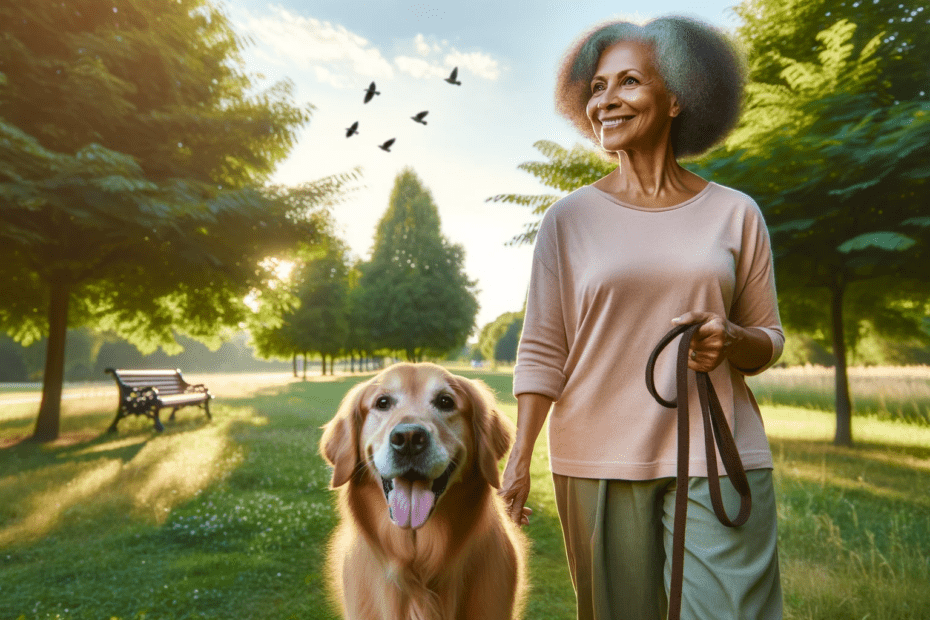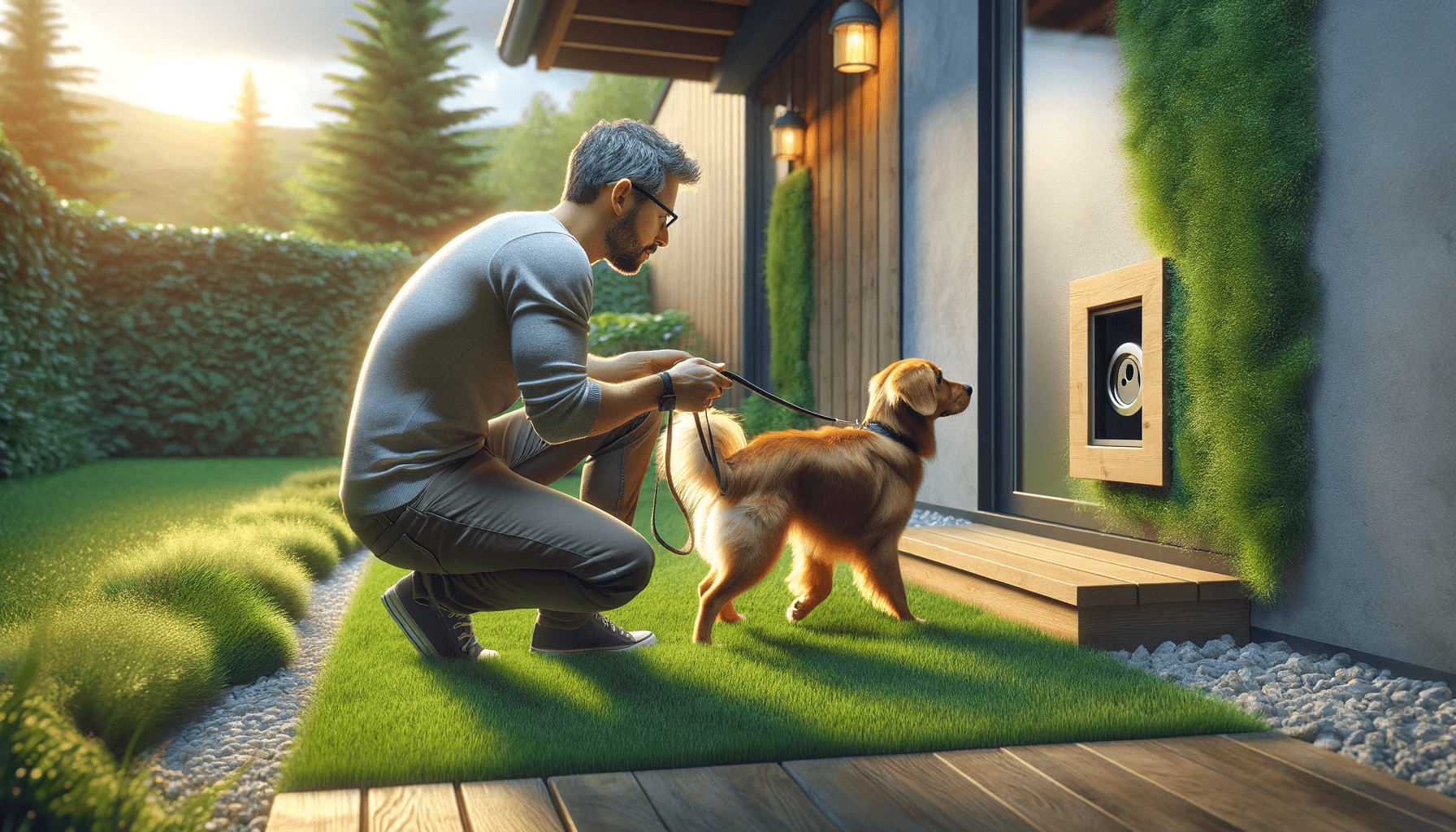Are you struggling with a leash reactive dog? Discover effective training techniques that can help you manage and improve your furry friend's behavior.
Positive reinforcement training, desensitization and counterconditioning, focus and attention exercises, clicker training, leash management techniques, controlled exposures to triggers, emergency situational training, socialization, and obedience training are all key strategies to address leash reactivity in dogs.
With the right approach and consistent practice, you can bring about positive changes in your dog's behavior on walks.
Key Takeaways
- Positive reinforcement training is highly effective for leash reactive dogs, as it rewards desired behaviors and encourages calm and focus during walks.
- Desensitization and counterconditioning are dual approaches that gradually expose the dog to triggers and change their emotional response through positive associations, ultimately reducing leash reactivity.
- Focus and attention exercises can help redirect the dog's attention away from triggers, improve their response to commands, and strengthen their engagement during walks.
- Leash reactivity solutions include counter-conditioning and desensitization, engaging the dog's brain through mental stimulation, using management tools like head halters or front-clip harnesses, and preventing leash reactivity to gain more control over the dog's movements.
Positive Reinforcement Training
Use positive reinforcement techniques to reward desired behaviors and encourage leash-reactive dogs to remain calm and focused during walks. Positive reinforcement is a highly effective training method that focuses on rewarding good behavior rather than punishing unwanted behavior. This approach helps to build a positive association with the leash and walking experience, which can greatly reduce leash reactivity in dogs.
Desensitization techniques are an essential part of positive reinforcement training for leash-reactive dogs. The goal is to gradually expose the dog to the triggers that cause reactivity, such as other dogs or unfamiliar people, in a controlled and positive manner. By starting at a distance where the dog feels comfortable and gradually decreasing that distance over time, the dog can learn to remain calm and focused in the presence of these triggers.
Leash reactivity solutions also involve teaching the dog alternative behaviors to replace the reactive response. For example, teaching the dog to sit or focus on their owner when they see a trigger can redirect their attention and prevent reactivity. These alternative behaviors should be rewarded consistently to reinforce their positive association.
Consistency and patience are key when using positive reinforcement techniques for leash-reactive dogs. It may take time for the dog to learn and change their behavior, but with consistent training and positive reinforcement, leash reactivity can be significantly reduced or even eliminated.
Desensitization and Counterconditioning
To effectively address leash reactivity in your dog, it's important to implement desensitization and counterconditioning techniques. These behavior modification strategies can be highly effective in reducing your dog's reactivity and helping them feel more comfortable when encountering triggers on walks.
Desensitization involves gradually exposing your dog to the trigger that causes their reactivity in a controlled and systematic manner. The goal is to expose your dog to the trigger at a level that doesn't elicit a reactive response and then gradually increase their exposure over time. For example, if your dog becomes reactive when they see another dog, you might start by having them observe other dogs from a distance where they feel calm and relaxed. As they become more comfortable, you can gradually decrease the distance between them and the trigger.
Counterconditioning, on the other hand, involves changing your dog's emotional response to the trigger. Through positive associations, you can teach your dog that the trigger predicts something good. For instance, you can reward your dog with treats or praise every time they see the trigger without reacting. This helps your dog develop a positive association with the trigger and reduces their reactivity.
By combining desensitization and counterconditioning, you're effectively changing your dog's emotional response to the trigger while also gradually exposing them to it. This dual approach can lead to significant improvements in your dog's leash reactivity over time.
Remember to be patient and consistent in your training efforts, as behavior modification takes time and dedication.
Focus and Attention Exercises
To effectively address leash reactivity in dogs, it's crucial to focus on building their attention and focus. By incorporating specific exercises and techniques, you can help your dog develop better self-control and redirect their attention away from triggers.
These focus and attention exercises won't only improve your dog's ability to respond to commands but also help them stay calm and relaxed during walks.
Leash Reactivity Solutions
Improve your dog's focus and attention with effective leash reactivity solutions. Leash reactivity can be challenging to manage, but there are solutions that can help you and your dog overcome this issue. Here are four leash reactivity solutions that have been proven effective:
- Counter-conditioning: This technique involves changing your dog's emotional response to triggers by pairing them with positive experiences, such as treats or playtime.
- Desensitization: Gradually exposing your dog to the triggers at a distance they can handle and rewarding calm behavior can help reduce reactivity over time.
- Engage your dog's brain: Mental stimulation through interactive toys or obedience training can redirect your dog's focus and help them stay calm during walks.
- Use management tools: Tools like head halters or front-clip harnesses can give you more control over your dog's movements and prevent leash reactivity.
Building Canine Focus
After implementing the leash reactivity solutions discussed in the previous subtopic, you can now focus on building your dog's attention and focus through various exercises.
Canine engagement is crucial in tackling leash reactivity, and these focus and attention exercises can help strengthen your dog's ability to stay calm and focused in distracting situations.
One effective exercise is the 'Watch Me' command, where you hold a treat near your face and say 'Watch me' to get your dog to make eye contact with you. Practice this in quiet settings and gradually increase the level of distraction.
Another exercise is the 'Leave It' command, which teaches your dog to ignore distractions and maintain focus on you. Start with low-level distractions and reward your dog for ignoring them.
Consistent and patient practice of these exercises will improve your dog's ability to maintain focus even in challenging situations.
Clicker Training
By utilizing clicker training, you can effectively address leash reactivity in your dog. Clicker training is a positive reinforcement method that involves using a clicker to mark desired behaviors and then rewarding your dog with a treat.
Here are four key benefits of clicker training and some techniques to get you started:
- Clear Communication: The clicker provides a clear and consistent signal to your dog, making it easier for them to understand which behaviors are being reinforced.
- Precise Timing: Clicker training allows you to mark the exact moment your dog performs the desired behavior, helping them make the connection between the behavior and the reward.
- Positive Association: Using treats as rewards creates a positive association with training, making it enjoyable for your dog and increasing their motivation to learn.
- Versatility: Clicker training can be used to teach a wide range of behaviors, from basic commands like sit and stay to more complex tricks and obedience skills.
To start clicker training, simply follow these steps:
- Charge the clicker by clicking and immediately giving your dog a treat.
- Begin by teaching your dog to associate the clicker with a reward by clicking and treating several times in a row.
- Use the clicker to mark and reinforce desired behaviors, such as walking calmly on a leash or ignoring distractions.
- Gradually fade out the treats and rely more on verbal praise and physical affection as your dog becomes more proficient in their training.
Leash Management Techniques
When it comes to leash management techniques for leash reactive dogs, there are several points to consider.
First, positive reinforcement methods can be highly effective in shaping desired behaviors and reducing reactivity.
Second, desensitization and counterconditioning techniques can help your dog become more comfortable and less reactive to triggers on walks.
Lastly, proper leash handling is crucial in maintaining control and preventing any escalation of reactive behavior.
Positive Reinforcement Methods
Your dog's leash reactive behavior can be effectively managed through the use of positive reinforcement techniques. By using these methods, you can build trust with your dog and help them become more relaxed during walks. Here are four key techniques to implement:
- Counterconditioning: This involves pairing the presence of triggers that cause your dog to react with positive experiences, such as treats or playtime. Over time, your dog will start to associate the triggers with positive outcomes, reducing their reactivity.
- Desensitization: Gradually exposing your dog to trigger stimuli at a distance they can handle without reacting. As your dog becomes more comfortable, you can gradually decrease the distance, helping them learn to stay calm.
- Focus exercises: Teaching your dog to focus on you instead of the triggers can redirect their attention and help them remain calm. Practice commands like 'look at me' or 'watch me' to build this skill.
- Relaxation exercises: Teaching your dog relaxation techniques, such as deep breathing or settling on a mat, can help them stay calm in stressful situations. Practice these exercises regularly to reinforce a relaxed state of mind.
Implementing these positive reinforcement techniques won't only help manage your dog's leash reactivity but also strengthen the bond between you and your furry friend.
Desensitization and Counterconditioning
To effectively manage leash reactive dogs, incorporate desensitization and counterconditioning techniques into your leash management routine.
Desensitization involves exposing your dog to the trigger that causes their reactivity in a controlled and gradual manner. Start at a distance where your dog is comfortable, and as they become more relaxed, gradually decrease the distance between them and the trigger.
Counterconditioning, on the other hand, focuses on changing your dog's emotional response to the trigger. Pair the presence of the trigger with something positive, such as treats or praise, to create a positive association. Over time, your dog will learn to associate the trigger with something positive, reducing their reactivity.
It's important to remember that desensitization and counterconditioning require patience, consistency, and professional guidance. Always prioritize your dog's safety and well-being during leash reactivity management.
Proper Leash Handling
As you continue to work on desensitization and counterconditioning, it's essential to master proper leash handling techniques for managing leash reactive dogs. Effective leash management strategies can greatly contribute to the success of your training efforts.
Here are four important techniques to keep in mind:
- Maintain a loose leash: Keep the leash relaxed and avoid tension. A tight leash can increase your dog's anxiety and reactivity.
- Use a sturdy leash and harness: Opt for a strong leash and a well-fitting harness to ensure control and prevent escape.
- Practice proper leash length: Find the right balance between giving your dog enough freedom to explore and keeping them close enough for control and redirection.
- Employ directional changes: Use abrupt changes in direction to redirect your dog's attention and prevent them from fixating on triggers.
Controlled Exposures to Triggers
How can you effectively expose your leash reactive dog to triggers in a controlled manner? Controlled exposures to triggers involve a gradual exposure and controlled desensitization process to help your dog overcome their reactive behavior. The goal is to create a positive association with the trigger and reduce their fear or anxiety response.
To begin with, identify the triggers that elicit a reactive response from your dog. It could be other dogs, bicycles, or loud noises. Once you have identified the triggers, start with a distance where your dog can remain calm and relaxed. This distance will vary for each dog, so it's essential to monitor their body language and behavior.
Next, gradually decrease the distance between your dog and the trigger. Use treats, toys, or positive reinforcement to help redirect their attention and create a positive association. If your dog starts to show signs of stress or reactiveness, increase the distance again and give them time to calm down.
Throughout the process, it's important to remain patient and consistent. Consistency will help your dog understand what's expected of them and build their confidence. Additionally, it's crucial to reward calm behavior and provide plenty of praise and encouragement.
Controlled exposures to triggers can be challenging, but with time, patience, and consistency, you can help your leash reactive dog overcome their reactive behavior and become more comfortable in their environment.
Emergency Situational Training
For effective leash reactive dog training, implement emergency situational training to prepare you for unexpected encounters with triggers. This type of training focuses on teaching your dog an emergency recall, which is crucial in situations where their reactivity escalates and they need to be brought under control quickly. Here are four key components of emergency situational training:
- Emergency Recall: Teach your dog a reliable recall command that they'll respond to immediately, even in high-stress situations. This can be achieved through consistent training and positive reinforcement.
- Impulse Control Training: Help your dog develop impulse control by teaching them to resist the urge to react impulsively to triggers. This can be done through exercises such as 'leave it' or 'wait' commands.
- Distraction Training: Gradually expose your dog to various distractions and teach them to maintain focus and respond to commands even when faced with tempting triggers.
- Practice in Realistic Scenarios: Simulate emergency situations during training sessions to ensure that your dog can respond effectively when faced with unexpected triggers. This can include using props or enlisting the help of a trainer.
Socialization and Obedience Training
To improve the behavior of your leash reactive dog, prioritize socialization and obedience training.
Canine socialization is crucial for a well-rounded and confident dog. Exposing your dog to different people, animals, and environments from an early age helps them develop positive associations and reduces fear and anxiety. Start by introducing your dog to a variety of friendly dogs and gradually increase the difficulty level by including dogs with different sizes, energy levels, and temperaments. This will help your dog learn appropriate social skills and how to react calmly in different situations.
Additionally, obedience training is essential for leash reactive dogs. Teaching basic commands such as sit, stay, and come can help redirect your dog's attention and keep them focused on you during walks. Practice these commands in different environments, gradually increasing the distractions to ensure your dog's responsiveness. Consistency and positive reinforcement are key when it comes to obedience training.
Frequently Asked Questions
Can Leash Reactive Dogs Be Successfully Trained Using Punishment-Based Training Methods?
You may wonder if leash reactive dogs can be trained with punishment-based methods. However, it's important to note that positive reinforcement training has shown to be more effective in achieving long-term behavior change and building a trusting bond with your dog.
How Long Does It Typically Take to See Improvement in a Leash Reactive Dog's Behavior Through Positive Reinforcement Training?
Improvement in a leash reactive dog's behavior through positive reinforcement training depends on various factors. The duration of training can vary, with some dogs showing progress within weeks, while others may take months.
Are There Any Specific Breeds That Are More Prone to Leash Reactivity?
Certain breeds, such as German Shepherds and Pit Bulls, are more prone to leash reactivity. However, with effective training techniques, like counter-conditioning and desensitization, you can help your leash reactive dog improve their behavior.
Can Leash Reactive Behavior Be Completely Eliminated, or Is It Something That Needs to Be Managed Long-Term?
Leash reactive behavior can be managed through desensitization and counterconditioning techniques. It's important to consult a professional dog trainer to effectively address this issue. While complete elimination may not be possible, long-term management is achievable.
Is It Possible for a Dog to Become Leash Reactive as a Result of a Traumatic Experience, or Is It Strictly a Behavioral Issue?
Leash reactivity can be triggered by a traumatic experience, but it is not strictly a behavioral issue. There is a connection between fear and leash reactivity, and understanding this can help in effective training techniques.
Conclusion
In conclusion, effective training techniques for leash reactive dogs involve:
- Positive reinforcement
- Desensitization and counterconditioning
- Focus and attention exercises
- Clicker training
- Leash management techniques
- Controlled exposures to triggers
- Emergency situational training
- Socialization and obedience training
By implementing these techniques, you can help your leash reactive dog overcome their reactivity and develop better behavior on walks.
Remember to be patient, consistent, and seek professional guidance if needed.
With time and effort, you can help your dog become more comfortable and confident on the leash.






